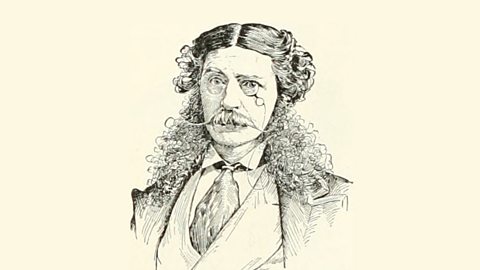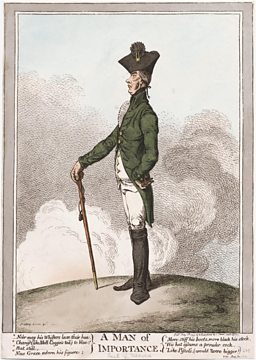The 19th-century hipster beard
You might think that beards are popular now, but the mid-19th century was a true golden age for massive facial hair: a time when beards were seen as the ultimate symbols of Victorian manliness and authority. But before the era of big beards came another curious trend: side-whiskers. Historian Dr Alun Withey investigates.
Beard fashions have always come and gone – the most famous, perhaps, being the so-called "beard movement" that began around 1850. Prior to then, British men had been clean-shaven for 150 years, a look exemplified by the smooth faces of the Georgians. Not so much as a five o’clock shadow was socially acceptable in Britain between 1680 and 1850.
Well… that’s not entirely true. In fact, the early 1800s saw facial hair return in a big way. But this time it wasn’t beards or moustaches, but another follicular fad: side-whiskers.
Around 1800, reports appeared of a new trend, popular amongst young city beaus, for cultivating these whiskers – long strands of hair grown along the outermost reaches of the wearer’s face, whilst cheeks, chin and neck remained smooth. To a society used to clean-shaven men, this was almost revolutionary.

Whiskerandos: The hipsters of the early 19th century
Alun Withey investigates the leading facial hair trend of 200 years ago.

In London and other large towns, whiskers were suddenly in vogue – so much so that some wigmakers invented detachable whiskers for their wigs, to give instant access to the trend. Meanwhile, new products emerged to help men grow side-whiskers, or to give them a healthy chestnut colour.
It was reported that women were training their lovelocks down their face in imitation
Whiskers became the facial hair fashion du jour. They were held up as the mark of the handsome man, not least since soldiers – the heroes of the day – often wore them.
To their advocates, they were “grave and manly”, standing in stark contrast to the “unfringed faces of the present day”. Growing facial hair of course also saved men from the “cruelty of shaving”, as a correspondent styling himself "Aenobarbus" noted. By 1808, it was even reported that some women were training their lovelocks down their face in imitation.
But there were also complaints. Some saw whiskers as symbols of effeminacy or “dandiness”: a foreign affectation that had no place on a British face. Others viewed them as dangerous, since whiskers and moustaches bore connections with political radicals. In 1813, Aenobarbus even suggested that some had called for an Act of Parliament to curtail the fashion.
By 1820 the trend had abated. British men once again returned to their razors – at least for the time being.
Beards have recently become a talking point again, not only in Britain but across the world. From the first signs of the trend in 2012 until very recently, men have rediscovered a love for facial hair in a way not seen for decades.

But beards come and beards go. As with most trends, it seems that the recent “hipster” or “Shoreditch” beard may already be passing into legend. As an historian of facial hair, I’m often asked whether it will be replaced – and, if so, with what.
Might whiskers be due a revival?
Dr Alun Withey is a Wellcome Research Fellow at the University of Exeter and an expert in early modern medical history. Learn more about Britain's mania for side-whiskers in Essential Classics on 5 December and online for 30 days.
-
![]()
Onfim's homework
The quirky, charming and poignant drawings of a child who lived eight centuries ago.
-
![]()
Simon Rattle: "There was nothing I wanted more than to be a drummer"
He may be one of the world's most famous classical conductors, but his first love was swing.
-
![]()
Essential Classics
Refresh your morning with a great selection of classical music, presented by Rob Cowan and Suzy Klein
-
![]()
In Tune Mixtape
An imaginative, eclectic mix featuring classical favourites, lesser-known gems and a few surprises.




